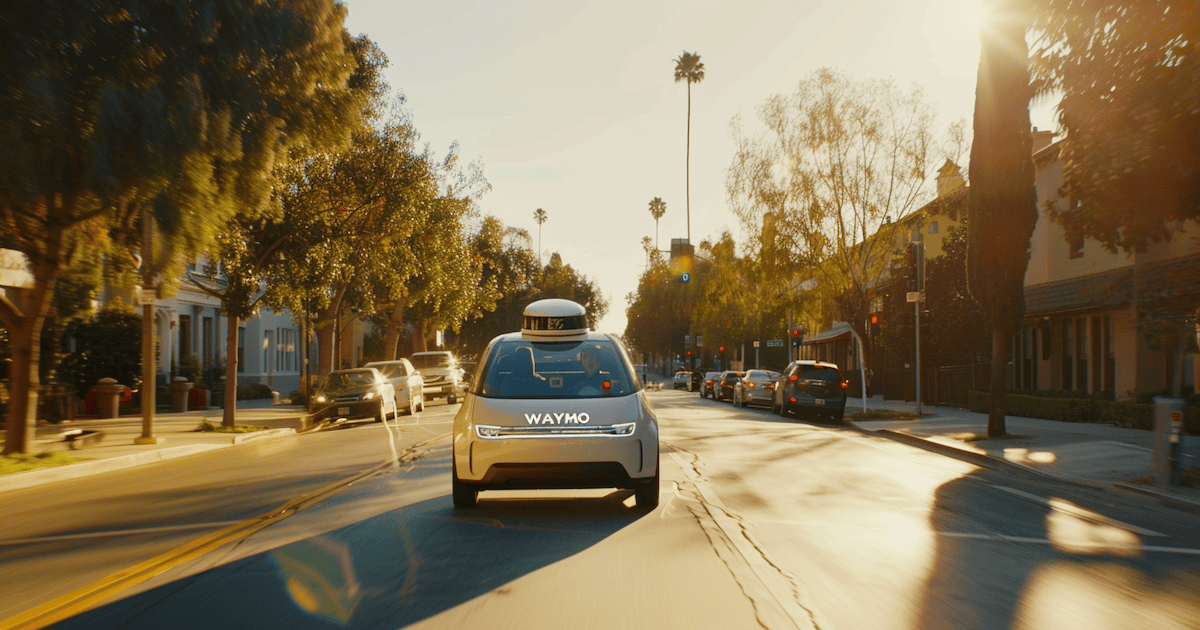
You’ve probably never seen one of the Waymo self-driving cars in action.
That is, unless you live in Los Angeles, Phoenix, San Francisco, or Austin.

They’re not very attractive to look at, with all of the self-driving gear packed onto and around the car.
But they’re fantastic to ride in.
As a self-driving ride-hailing service, they are the ultimate last step in removing friction in the transaction — the human.
For those of us that have been frequent users of ride hailing services, you’ll know what that friction looks like.
How many times has the Uber or Lyft driver texted us to let us know that they don’t want the ride? It’s too short. Or too far away. Or in the wrong direction. And we’re asked to cancel the ride.
Or we don’t like the music being played. Or the driver is talking on the phone loudly. Or the car is too hot or too cold. Or it smells so strongly of air freshener, it gives you a migraine. Or one of my favorites, the driver was playing Pokémon Go while driving (note: that was not a safe ride).
Self-driving ride hailing services remove all of that “friction,” improve safety, improve quality of service, and ultimately reduce costs for consumers.
This is a radical change in public transportation that is happening right now, which is why we’ve been tracking the progress of Waymo.
And the Waymo division of Alphabet just had a big week last week.
Last week, Waymo announced that it is now providing more than 50,000 paid trips every week across three cities (note: Austin hasn’t yet commercially launched).
That may sound like a lot. And it is. But it is only a drop in the bucket for the ride sharing industry.
Uber provides about 28 million rides a day on average. And Lyft provides around 2 million rides a day. Waymo has a long way to go before it hits 1 million rides a month, let alone a day.
Waymo’s biggest challenge in autonomous driving is the difficulty that it has in scaling its technology to new cities.
Due to its software design, Waymo has to first create extremely detailed maps of every street in an area where Waymo wants to deploy its technology.
It has human drivers drive Waymo test vehicles loaded with LIDAR, radar, and cameras that capture an incredible amount of information about every millimeter the car covers.
In doing so, it creates somewhat of a memory of the service area.

Once this information is captured, it’s used to train the self-driving software and prepare for further testing in the field under the supervision of human drivers.
It is a slow, time-consuming, and expensive process. That’s why after about 13 years of development, Waymo is only commercially operating in three cities (Phoenix, Los Angeles, and San Francisco) and testing in a fourth (Austin).
But those deployments aren’t even covering a greater metropolitan area. They are geofenced. And they tend to be rolled out in segments, as the data collection and training increase.
As an example, below is how Waymo has been rolling out in Los Angeles starting in the Santa Monica area and moving east.

And what about riders that need to get from Santa Monica to Long Beach? Right now, you’re out of luck.
My comments aren’t meant to be overly critical. The technology is still impressive. And like Tesla, Waymo has been able to document an 85% reduction in injury-causing crash rates compared to human drivers.
But taking this approach will take forever to enable national coverage. Forever.
In stark contrast is Tesla, which just isn’t getting much press coverage at all regarding its latest breakthroughs in self-driving technology (FSD).
Last month, Tesla eclipsed 1.3 billion driven miles using its full self-driving software.

The latest release of its FSD software, version 12 and its derivatives, has definitely accelerated the exponential use of Tesla’s self-driving technology.
On average, Tesla owners, who have FSD, are having their cars drive about 15 million miles a day. For perspective, Tesla cars drive themselves more in a day than Waymo’s cumulative totals.
And Tesla is adding on about 1 billion miles driven about every 68 days at this pace. Using some rough calculations, Tesla will add between 3.5 and 4 billion additional self-driving miles between now and the end of this year, putting its total FSD miles well above 5 billion by the New Year.
The key point for us to remember is that every FSD mile driven is used for training data for Tesla’s self-driving software. And Tesla’s self-driving software is built on neural network technology with only cameras for vision. It is designed to “see” what we see, only in 360 degrees around the car in real-time, and up to a range of 250 meters beyond the car.
That’s why this technology is safer than human drivers. Humans have a reduced field of vision. We can’t see everything around the car at the same time. And we get tired and distracted easily.
No other company in the world is collecting and training on the scale of Tesla. And the significance of its approach enables its vehicles to drive on any road at any time. There is no geofencing.
And the way we can think about the exponential growth of FSD miles driven is as an accelerant to full Level 5 autonomy.
But not just for passenger cars, trucks, or semis…
For any kind of robotics device that needs to navigate the real world.
We always welcome your feedback. We read every email and address the most common comments and questions in the Friday AMA. Please write to us here.